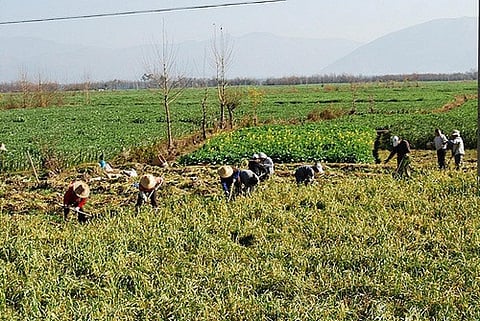

The introduction of a new round of agricultural censuses in the Asia-Pacific region will help countries meet the zero hunger challenge by 2030, experts feel.
Twenty one countries are participating in a roundtable discussion as part of the Food and Agriculture Organization’s (FAO) World Programme for the Census for Agriculture 2020 (WCA 2020). The census, held once every 10 years since 1930, provides a snapshot of the current state of agriculture in different countries.
According to Senior FAO Statistian Jairo Castano, the WCA 2020 presents flexibility in the type of data to be collected by the participating countries. It recommends the collection of 23 essential items that are imperative for national purposes and international comparability.
“By collecting at least the essential items, countries ensure that agri census results are internationally comparable, allowing them to benchmark their performance against others,” Castano told Down To Earth via mail.
According to Mukesh Srivastava, senior statistician at the FAO regional office for Asia and the Pacific, there are two aspects to international comparison. First, all countries should cover the information on similar data items. Second, the countries follow the same concept and definitions to collect data. Apart from recommending minimum essential items for all countries, the WCA guidelines provide a set of standards to be followed for data collection to ensure comparability.
"The comparison to track development process among countries is advisable not only for the countries themselves, but it is equally useful for monitoring the development pace globally for directing international support to national efforts. Internationally, comparable data helps to compile regional and sub-regional aggregates for use of bodies like the SAARC and UN agencies," Srivastava said.
The new round of national censuses takes place between 2016 and 2025.
Importance of agricultural censuses
Agricultural censuses are sources of structural information that, through comparison at different points of time, can contribute to the monitoring of environmental changes around us.
Data on the use of environmentally-friendly practices, collected through the census of agriculture, helps decision-makers and planners adopt measures to mitigate adverse effects.
In today’s age, environmental impacts of agriculture cannot be ruled out. The negative effects include ploughing, crop rotation and sources of high greenhouse gas emissions.
Through the help of censuses, emissions can be analysed that can help countries improve their ability to plan effective climate change responses.
“The use of land can have environmental consequences that range from pollution of waterways to global warming and the census of agriculture is the main source of data on the actual land use in a country,” Castano said.
Reporting emissions
Under the UN Framework Convention on Climate Change, countries should regularly report their emissions from all sectors and this includes agriculture.
An important use of census information to measure environmental impacts is with reference to water management and irrigation, the FAO expert added.
Methods of irrigation, sources of water and the final disposal of water used for irrigation are important elements to analyse threats to the environment.
Inclusion of fisheries
A module on fisheries has been included for the first time in the WCA 2020. According to Castano, there is a strong demand for data on household subsistence fishing and the module suggests items that will collect data on small-scale fishing activities at the household level. It is not intended to target large-scale commercial fishing.
An agricultural census can focus on fishery and aquaculture activities, which are well integrated with agricultural practices in Asia, for instance the rice-cum-fish culture or such small-scale fisheries commonly carried out by agricultural households to make viable living, Srivastava added. "Very often, particularly in east India, fish-related activities are combined with farming activities of agricultural households on their land. The development of fishery and aquaculture sector is important for improving the nutritional security of regular households and for providing additional means of livelihood to rural households."
The India scenario
For India and other developing countries, agricultural planning and policy-making process is an evidence-based process, depending on the statistical system.
Agriculture censuses contribute to this process in a number of key areas: